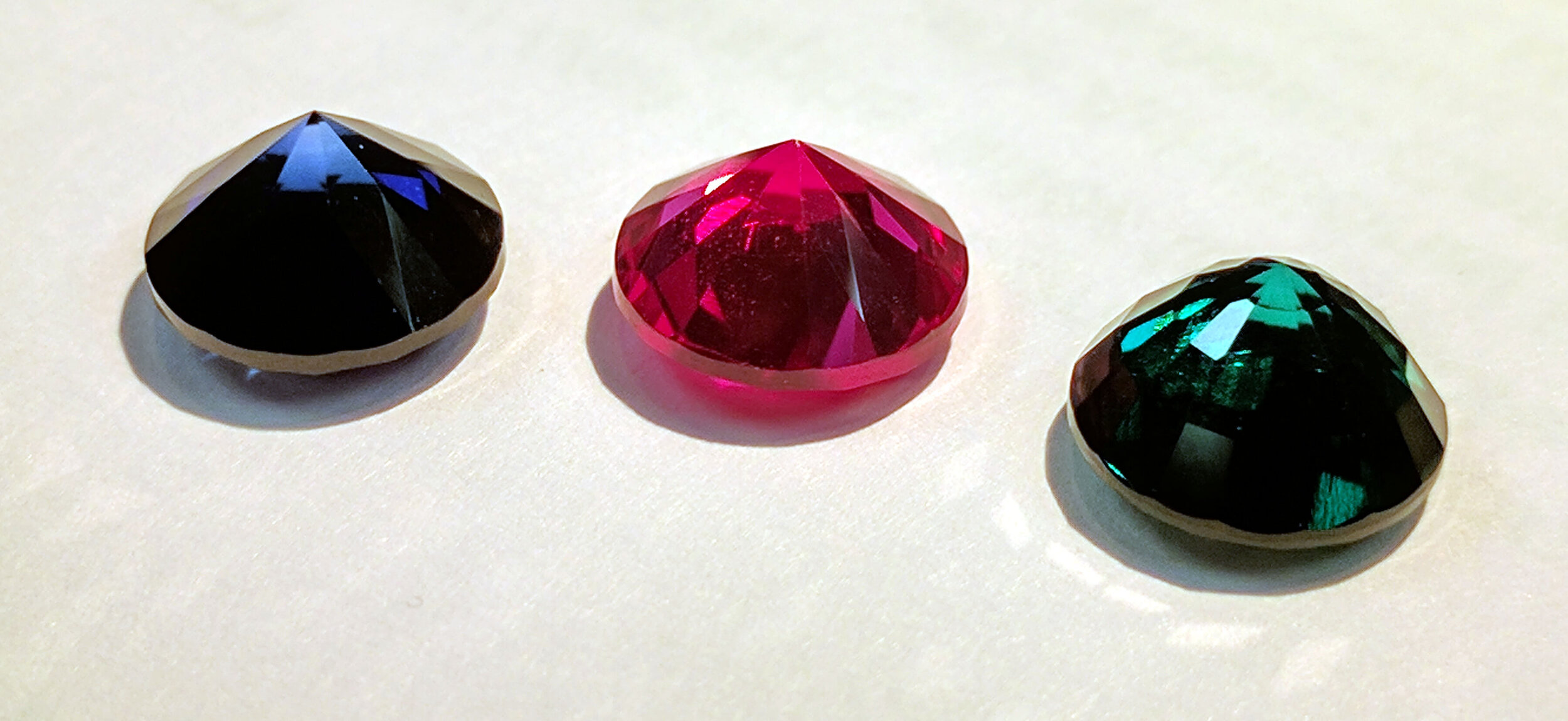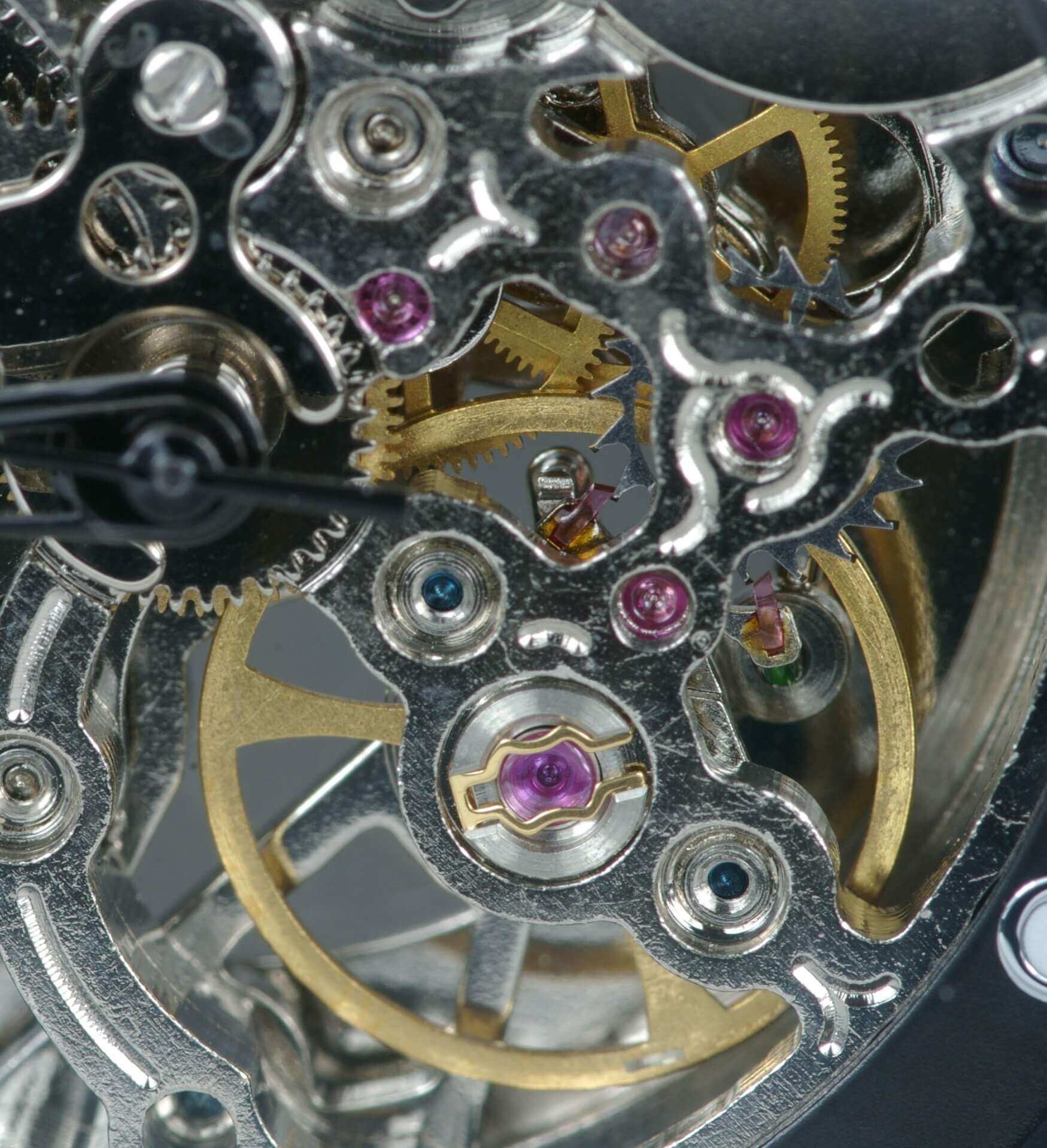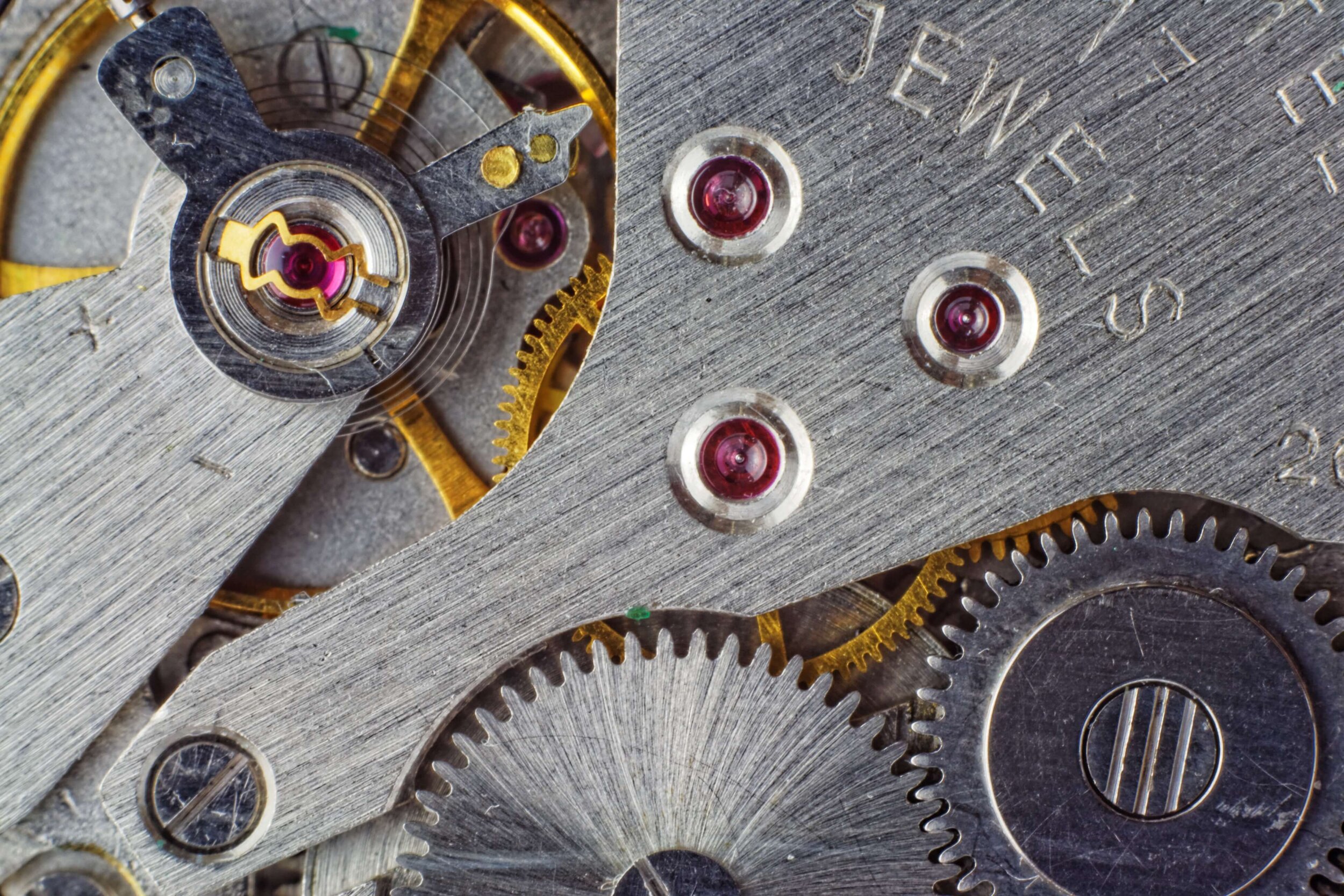What Are Jewels in a Watch? A Complete Guide
What are Watch Jewels?
Watch jewels, sometimes known as jewel bearings, are tiny pieces of synthetic ruby or sapphire set into holes within a watch movement. These gems primarily help to reduce friction and provide a hard, smooth surface to allow metal components such as the wheel train to rotate freely. The predictable friction of these jewels aids accuracy and their durability helps to increase the life of the bearings.
In modern watches, there is no difference in performance between ruby and sapphire jewels, as they are fundamentally the same mineral (Al2O3 Corundum) with identical properties; impurities contribute to the colour difference.
Before the artificial crystal production processes of the 20th Century, watches often utilised other materials such as quartz, glass or garnet.
These jewels are typically placed at particular areas of stress or strain within the watch movement; often including the balance wheel, the escapement assembly and at various points across the wheel train.
[For more information on the different parts of a mechanical watch, you can view our guide, which understandably explains each part.]
Not only are jewels used at points of rotation, but also points of impact such as the pallet fork. To ensure accurate shape and fit, jewels are typically shaped using advanced technologies such as chemical etching, milling and lasering.
Types of Jewel Bearing
Two types of bearing are commonly used within a mechanical watch movement, namely hole jewels and capstones (aka cap jewels).
Hole Jewels: Hole jewels are used for most of the standard gear train wheels and are press-fit into prefabricated holes in the support structure, giving them their name. These sleeve-like bearings feature a single, circular, concave jewel, with a precise hole for the gear shaft (aka the arbor) to slot within; resulting in an overall shape akin to a doughnut. There is also some oil present around this hole to aid lubrication.
Hole Jewel
Cap Jewels: Some bearings utilised cap jewels, sometimes known as end stones or ‘capstones’. This bearing structure operates similarly but has a second outer jewel, which sits at the very tip of the gear shaft. This has several effects. Firstly, a small oil reservoir is formed between the two jewel layers, ensuring continuous lubrication for the fastest-moving parts such as the balance wheel. Secondly, they allow the shaft to be constructed in a conical shape, which prevents oil from seeping down the arbor and stops the shoulders of the arbor from rubbing against the jewel, which would negatively impact accuracy. These caps also prevent the arbor from moving up and down during rotation.
Cap Jewel
How Many Jewels in a Good Watch?
Approximately 17 jewels are used in basic mechanical watches, though modern watches with self-winding (automatic) capabilities will typically house 25-27 jewels. Other watches, including those with more complications, may include even more; though a higher jewel count does not necessarily indicate a higher quality watch.
If you are unsure of the number of jewels featured in your watch and it is not made clear on the watch dial, most automatic movements have the figure etched onto the rotor.
Do Quartz Watches Have Jewels?
Surprisingly, some quartz movements do have jewels, despite featuring far fewer moving parts. These battery-powered watches primarily operate using an electrical circuit featuring a quartz crystal; however, there remains some gearing to enable hand rotation. Jewels are placed within these gear bearings, to smooth their rotation and preserve accuracy and durability over time. A jewelled quartz movement can have between 5 and 10 jewels, depending on the manufacturer and number of complications (chronograph watches, for example, will feature more jewels due to the faster moving parts).
Many budget quartz movements feature no jewels, including those powering digital watches which require no hands. Unlike with mechanical movements, jewels are not essential to make a quartz watch accurate.
Are Watch Jewels Worth Anything?
Unfortunately, as modern watch jewels are man-made gems, they are not as valuable as their naturally occurring counterparts present in other jewellery, such as expensive necklaces and bracelets. Typically, these synthetic jewels are available to purchase for as low as a couple of pence per unit. Therefore, contrary to popular belief, jewels are not the reason that some watches cost a substantial amount of money.
Are More Jewels in a Watch Better?
Despite what watchmakers and retailers may have you believe, the jewel count does not inherently mean the watch is better quality than other wristwatches. Often the number of jewels is simply correlated with the number of complications the watch has. In the 1960s, manufacturers raced to produce watches with an ever-increasing number of jewels, in the hope of attaining the bragging rights to the highest jewel count on the market. Some even went as far as to add non-functional jewels to random areas of the movement, to bolster this figure further; with some reaching over 100 jewels in a single movement.
These extreme marketing practices were all-but put to bed in 1974 when the ISO 1112 standard was introduced; preventing manufacturers from including these unnecessary, excess jewels in their advertising.
Outside of the essential jewels, it’s unlikely that the end-user will notice significant performance improvements with higher jewel count watches, especially when no additional functions are added.






